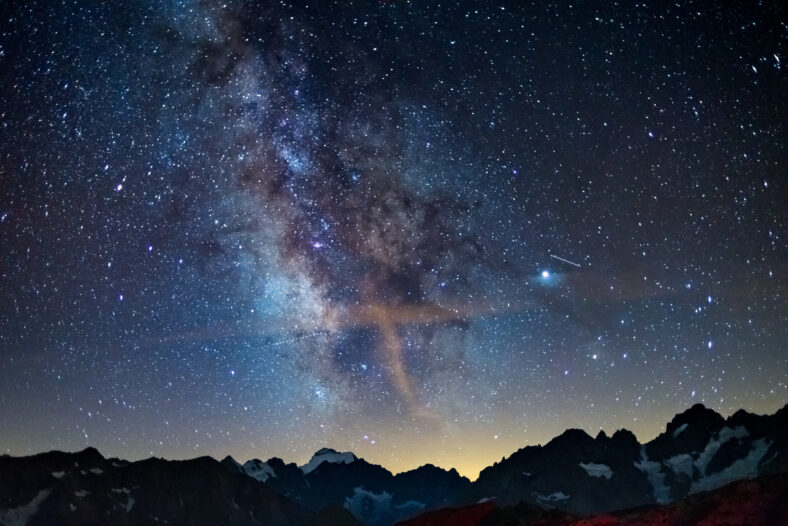The James Webb Space Telescope Helped Achieve A Major Milestone By Uncovering 44 Ancient Stars

With the help of NASA’s James Webb Space Telescope (JWST), a research effort led by astronomers at the University of Arizona’s Steward Observatory has achieved a major milestone in the study of the cosmos.
By observing a galaxy nearly 6.5 billion light-years away, dating back to when the universe was just half of its current age, scientists identified 44 individual stars.
This feat was made possible through gravitational lensing and the light-collecting power of the JWST. Now, the finding has set a record for the most individual stars ever observed in a distant galaxy.
“This groundbreaking discovery demonstrates, for the first time, that studying large numbers of stars in a distant galaxy is possible,” explained Fengwu Sun, a postdoctoral researcher at the Center for Astrophysics | Harvard & Smithsonian (CfA) and co-author of the study.
Sun detailed how earlier research using the Hubble Space Telescope identified about seven stars. However, with the JWST’s improved capabilities, scientists can now detect stars that were previously beyond reach.
This advancement is significant because observing more individual stars allows researchers to study dark matter in the lensing regions of galaxies and stars, something that wasn’t possible when only a few stars were observable.
The collection of stars was discovered while examining JWST images of a galaxy known as the Dragon Arc. It’s located behind a massive galaxy cluster named Abell 370, and the gravitational lensing effect of Abell 370 distorts the Dragon Arc’s spiral shape into a stretched, elongated form.
By analyzing the colors of the stars in the Dragon Arc, the team discovered that many of them are red supergiants. This is a notable difference from previous findings, which mainly identified blue supergiants.
The researchers pointed out how this discrepancy underscores the capability of the JWST to use infrared wavelengths, allowing it to uncover cooler stars that might’ve gone unnoticed with other telescopes.

Sign up for Chip Chick’s newsletter and get stories like this delivered to your inbox.
“When we discovered these individual stars, we were actually looking for a background galaxy that is lensing-magnified by the galaxies in this massive cluster,” Sun said.
“But when we processed the data, we realized that there were what appeared to be a lot of individual star points. It was an exciting find because it was the first time we were able to see so many individual stars far away.”
Galaxies like the Milky Way are typically home to tens of billions of stars, and in nearby galaxies, astronomers can study individual stars.
Yet, the light from stars in galaxies that are billions of light-years away seemingly blend together during the long journey to Earth. This is precisely why scientists have struggled to understand the formation and evolution of galaxies.
The study’s lead author, Yoshinobu Fudamoto, discussed how distant galaxies tend to “look like a diffuse, fuzzy blob,” but in reality, these blobs are made up of countless individual stars that can’t be distinguished with current telescopes.
Astronomy advancements have opened up new possibilities through the use of gravitational lensing, a phenomenon where the strong gravitation pull of massive objects magnifies light. This effect can amplify the light of far-away stars and allow them to be observed by powerful telescopes.
With additional JWST observations, scientists hope to uncover even more magnified stars in the Dragon Arc, which could enable research on hundreds of distant stars.
Studying these individual stars may even better our understanding of the structure of gravitational lenses and help unravel the mysteries surrounding dark matter.
To read the study’s complete findings, which have since been published in Nature Astronomy, visit the link here.
More About:News